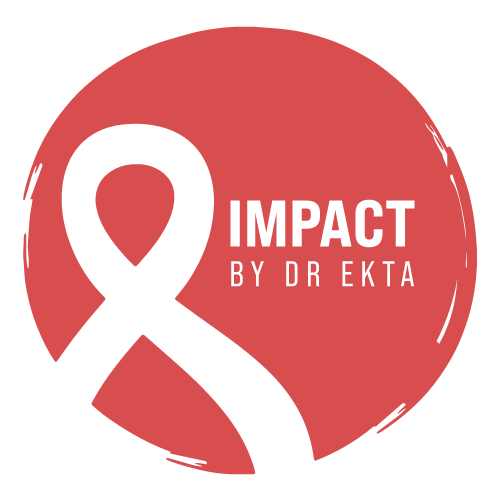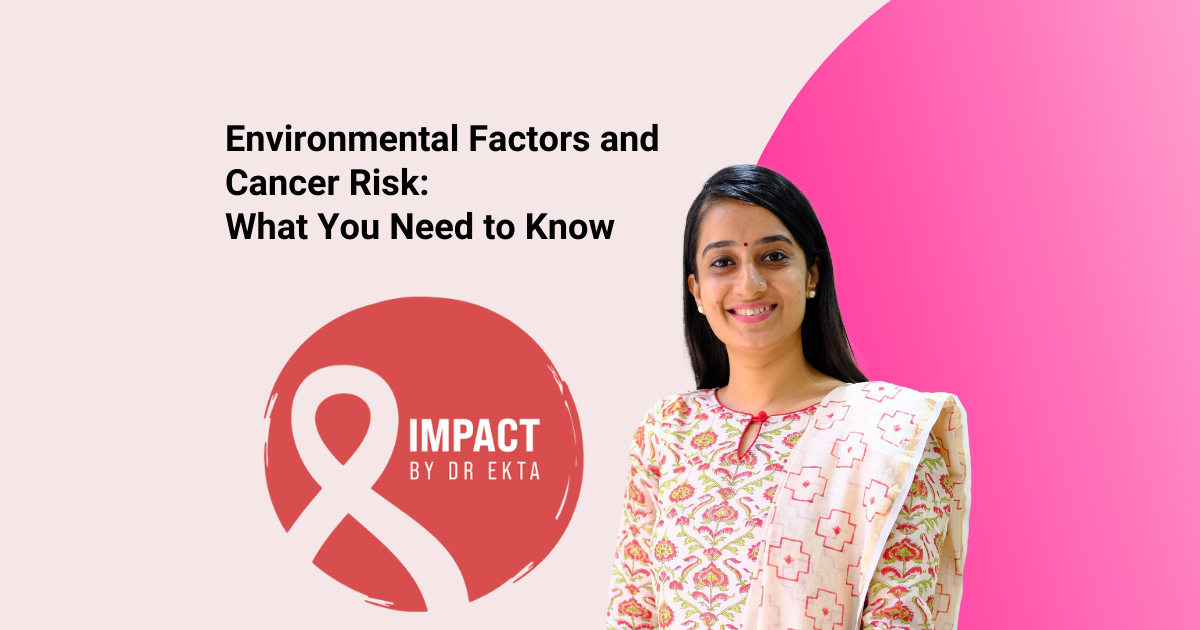As an oncologist, I often get asked about the causes of cancer, and one topic that frequently arises is the role of environmental factors in increasing cancer risk. While genetics and lifestyle choices such as smoking or diet are well-known contributors, the environment we live in can also play a significant part in determining our overall cancer risk. Exposure to certain environmental agents can contribute to the development of cancer, often in ways that people don’t immediately realize. In this blog, I want to explore how environmental factors can affect cancer risk and what you need to know to reduce your exposure.
Understanding Cancer Risk and Environmental Factors
Cancer risk refers to the likelihood that a person will develop cancer in their lifetime. While some risks are inherited, such as genetic predispositions, others are acquired through exposure to harmful substances or environmental conditions. Environmental factors, in this context, refer to elements in the environment around us—whether at home, at work, or in the air we breathe—that can increase the risk of cancer.
Exposure to certain chemicals, pollutants, or radiation in our environment can damage the DNA in our cells, potentially leading to the development of cancer over time. It is important to note that not everyone who is exposed to these risk factors will develop cancer, but prolonged or high levels of exposure increase the likelihood.
Common Environmental Factors That Increase Cancer Risk
There are a number of environmental elements that have been identified as increasing cancer risk. Below are some of the most common ones:
1. Tobacco Smoke (Secondhand Smoke)
We all know that smoking increases the risk of lung cancer, but even exposure to secondhand smoke can increase your cancer risk. Inhaling secondhand smoke can lead to the development of lung cancer and has also been linked to cancers of the throat, bladder, and pancreas. This is particularly concerning for those who live with smokers or work in environments where smoking is common.
2. Air Pollution
Air pollution is a significant environmental concern, especially in urban areas where vehicle emissions, industrial processes, and construction activities can lead to increased exposure to harmful particles. Prolonged exposure to fine particulate matter (PM2.5) found in polluted air has been linked to a higher risk of lung cancer and other respiratory diseases. Research has also suggested that air pollution may be associated with increased risks of cancers of the bladder and breast.
3. Radon Gas
Radon is a colorless, odorless gas that naturally occurs in soil and can seep into homes through cracks in the foundation. Long-term exposure to high levels of radon has been shown to increase the risk of lung cancer, especially among smokers. In fact, radon exposure is the second leading cause of lung cancer after smoking. Testing your home for radon is important, especially in regions where radon levels are known to be high.
4. Ultraviolet (UV) Radiation
Prolonged exposure to ultraviolet (UV) radiation from the sun or tanning beds significantly increases the risk of skin cancers, including melanoma, basal cell carcinoma, and squamous cell carcinoma. UV radiation damages the DNA in skin cells, which can lead to cancer. It’s important to protect your skin by using sunscreen, wearing protective clothing, and avoiding tanning beds.
5. Asbestos
Asbestos is a naturally occurring mineral that was widely used in construction and manufacturing due to its heat-resistant properties. However, it is now well-known that asbestos exposure is a major risk factor for mesothelioma, a rare and aggressive form of cancer that affects the lining of the lungs, heart, and abdomen. Although asbestos use has been banned or restricted in many countries, people working in older buildings or in industries where asbestos was used may still be at risk.
6. Pesticides and Industrial Chemicals
Many industrial chemicals and pesticides contain substances that are classified as carcinogens, meaning they have the potential to cause cancer. Prolonged exposure to certain chemicals, such as benzene, formaldehyde, and arsenic, has been linked to an increased risk of leukemia, lymphoma, and cancers of the skin, liver, and bladder. Those working in industries like agriculture, manufacturing, or chemical production are at higher risk due to frequent exposure.
Reducing Environmental Cancer Risk: What Can You Do?
While we can’t completely eliminate our exposure to environmental factors, there are several steps we can take to reduce our cancer risk. Here are some practical measures I often recommend to my patients:
1. Avoid Tobacco Smoke
Whether you smoke or live with someone who does, reducing your exposure to tobacco smoke is one of the most effective ways to lower your cancer risk. If you smoke, consider quitting—there are many resources and programs available to help. If you’re exposed to secondhand smoke, encourage smoking outside and away from enclosed areas.
2. Test for Radon
Testing your home for radon, particularly if you live in an area with known radon issues, is essential. Radon test kits are affordable and easy to use, and if high levels of radon are detected, steps can be taken to ventilate and reduce radon levels in your home.
3. Use Sunscreen and Avoid Excessive UV Exposure
To reduce the risk of skin cancer, make sure to apply sunscreen with broad-spectrum protection and a high SPF. Avoid tanning beds, and try to limit sun exposure during peak hours when UV rays are strongest. Wearing hats, sunglasses, and long sleeves can also protect your skin.
4. Reduce Exposure to Pollutants and Chemicals
If you work in an industry where exposure to harmful chemicals or pollutants is common, make sure you follow safety guidelines and wear protective equipment. At home, reduce your exposure to pesticides and use eco-friendly cleaning products whenever possible. Ventilating your home regularly and using air purifiers can also reduce exposure to indoor air pollutants.
5. Check for Asbestos
If you live or work in a building built before the 1980s, it’s worth checking for asbestos. If asbestos is found, it should only be handled by licensed professionals, as disturbing it can release harmful fibers into the air.
6. Eat a Healthy Diet and Stay Physically Active
While this isn’t directly related to environmental factors, maintaining a healthy diet rich in fruits, vegetables, and whole grains, as well as staying physically active, can lower your overall cancer risk. A healthy lifestyle can help your body mitigate some of the risks posed by environmental exposures.
The Role of Advocacy and Awareness
One of the most important aspects of reducing cancer risk is raising awareness about the harmful effects of environmental factors. Many individuals are unaware of the risks associated with their living or working environments. As a community, we need to continue advocating for cleaner air, safer workplaces, and stricter regulations on chemicals and pollutants that are known to increase cancer risk.
Advocacy can also take the form of supporting policies that aim to reduce pollution and promote sustainable, eco-friendly practices. Reducing exposure to environmental carcinogens is a long-term, collective effort that benefits everyone.
Conclusion:
While we cannot always control the environment around us, we can take steps to reduce our exposure to environmental factors that increase cancer risk. Whether it’s avoiding secondhand smoke, testing your home for radon, or being mindful of UV radiation, small changes can make a big difference in lowering your cancer risk. By staying informed and taking action, we can work together to minimize the environmental risks that contribute to cancer.

